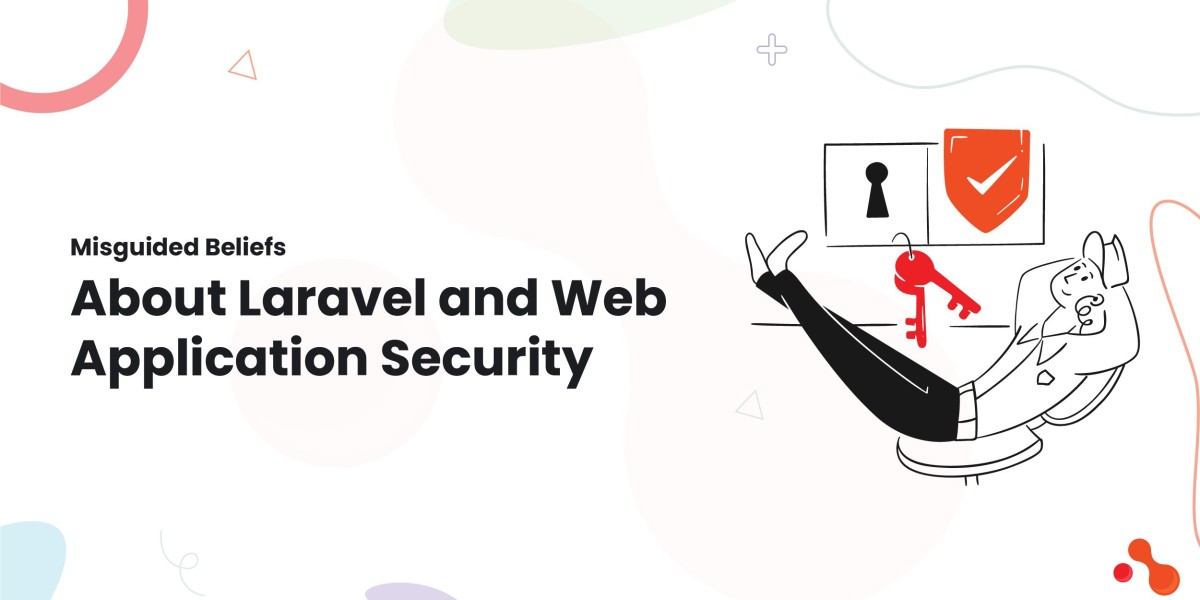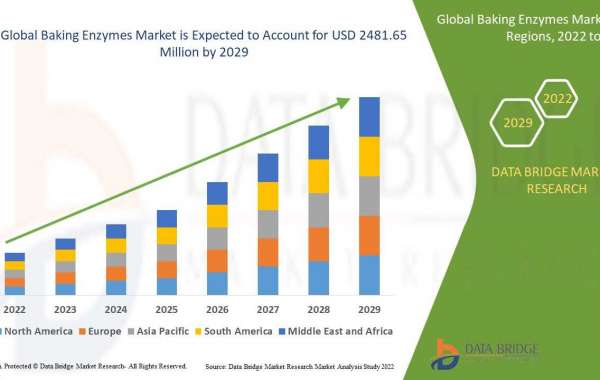Introduction
The Laravel framework, a widely used PHP-based development framework, has gained popularity for its simplicity, elegance, and extensive ecosystem. Due to the valuable data they handle and their exposure to the public Internet, web applications are frequent targets for cyberattacks. Cyber threats against web applications can lead to severe consequences. Some of the common issues include data breaches, financial loss, system compromises, and damage to reputation. Yet, when it comes to Laravel security, several myths and misconceptions surround it. This often leads to some developers and organizations believing that their web applications are either impenetrable or inherently vulnerable.
To mitigate these risks, it's crucial to adopt secure Laravel development. Stay updated with the latest security patches, and use security tools such as web application firewalls (WAF), intrusion detection systems (IDS), and encryption.
This article aims to debunk misguided beliefs about Laravel and web application security. At the same time it provides a comprehensive understanding of best practices to ensure the security of Laravel-based applications.
Laravel's Security Features
Laravel has a variety of built-in security features designed to protect web applications from common vulnerabilities. It is common for a Laravel development company to incorporate basic security features. Laravel 11 has introduced many more features that make it more secure.
However, more often than not, it is necessary to go beyond the basic security features as well. This is especially true when there is a high level of customization. Hence securing your application usually requires the expertise of a highly professional software development outsourcing company like Acquaint Softtech.
The basic Laravel security features include:
- Cross-Site Scripting (XSS) Protection: Laravel automatically escapes output in views to prevent XSS attacks.
- Cross-Site Request Forgery (CSRF) Protection: Laravel uses CSRF tokens to validate requests and protect against CSRF attacks.
- SQL Injection Protection: Laravel's query builder uses parameter binding to prevent SQL injection.
- Password Hashing: Laravel uses the bcrypt hashing algorithm by default to store user passwords securely.
Authentication and Authorization: Laravel provides a robust authentication system that is out-of-the-box and can be easily extended for role-based access control.
Common Misconceptions
It is not uncommon for some misconceptions to arise from a misunderstanding of the framework's capabilities. A failure to understand how the features fit into the broader context of web application security can have disastrous consequences. Hence, it makes sense to trust experts like Acquaint Softtech with the development of a secure application.
Here are some of the common misconceptions:
Laravel Applications Are Inherently Secure:
One of the most common misguided beliefs is that Laravel applications are inherently secure simply because they are built using the framework. This belief often leads developers to neglect Laravel security practices, assuming that the built-in features provide complete protection.
It is optional to Upgrade to the Latest Version:
Several businesses and developers believe it is not always necessary to update to the latest version. However, this often means exposing your application to security vulnerabilities since it does not have the latest security patch.
Laravel application testing is optional:
The website requirements tend to change and with custom code new security issues can creep up. Hence a failure to test the application at every stage can leave it vulnerable to threats.
Laravel Automatically Prevents All SQL Injections:
SQL injection is one of the oldest and most dangerous web vulnerabilities, and Laravel's query builder is designed to prevent it through parameter binding. However, many developers believe that Laravel automatically handles all forms of SQL injection, which is not entirely true.
CSRF Tokens Make Laravel Immune to All Attacks:
Laravel provides robust CSRF (Cross-Site Request Forgery) protection by generating unique tokens for each session. Many developers believe that as long as CSRF protection is enabled, their applications are immune to all attack vectors.
Laravel Handles Password Security Perfectly:
Laravel provides excellent password security features out-of-the-box. It uses the bcrypt algorithm to hash passwords, which is widely considered secure. However, some developers assume that simply using Laravel's default authentication system is enough to protect user passwords without any additional measures.
HTTPS Is Optional in Laravel Applications:
Many developers believe that implementing HTTPS (SSL/TLS) is an optional security feature, especially for smaller web applications. Some think that since Laravel provides security features like CSRF protection and SQL injection prevention, HTTPS is optional.
Laravel Guards Automatically Handle All Authentication and Authorization:
Laravel's authentication system includes guards and policies that help developers manage user access to resources. This leads some to believe that using guards automatically ensures that the application is fully protected against unauthorized access. The main issues involve failure to configure it correctly and not taking into account the modifications due to customization.
Laravel's Built-In Validation Protects Against All Malicious Input:
Laravel's validation system is often misunderstood as a complete solution for protecting against all types of malicious input, such as XSS, SQL injection, or remote file inclusion. Developers sometimes assume that as long as they use Laravel's validation rules, their applications are fully protected from malicious user input.
Laravel Applications Are Not Vulnerable to External Dependencies:
Laravel applications often rely on a wide range of third-party packages and libraries, many of which are manage through Composer. Some developers believe that using well-known packages makes their applications secure. They believe this practice ensures their application is not vulnerable to external dependencies.
Laravel's Error Handling Is Just About Debugging:
Laravel offers powerful error handling mechanisms This includes logging and exception reporting, which many developers view purely as debugging tools. Some assume that these error-handling features have no direct impact on security.
Only Backend Developers Need to Worry About Security:
Some developers believe that security is primarily a concern for backend developers. This is because they are responsible for handling sensitive data and managing server-side logic.
HTTPS is only necessary for sensitive pages like login or payment:
Some developers believe that HTTPS (SSL/TLS) is only require on pages that deal with sensitive information like login forms or payment transactions.
Using the latest version of Laravel guarantees security:
Many believe that simply updating to the newest version of Laravel is enough to keep the application secure.
Disabling Laravel debug mode in production is enough to protect sensitive data:
Other misconfigurations, such as exposing .env files or improper access control settings, can still leak sensitive information, including database credentials and API keys.
Laravel's ORM is Insecure:
Laravel's Eloquent ORM (Object-Relational Mapping) system is designed with security in mind. It uses prepared statements and parameter binding to prevent SQL injection attacks.
All Plugins and Packages are Safe:
The Laravel ecosystem is rich with plugins and packages that extend its functionality. However, assuming all third-party code is safe can be a grave mistake.
Laravel's Default Settings are Always Appropriate:
Lastly, a belief that Laravel's default settings are suitable for all scenarios can lead to security lapses. Each application has unique requirements, and what works for one may not work for another.
Prioritizing securing is not necessary:
More often than not the management tends to give low priority to the task of securing an application. This type of attitude can be potentially disastrous to your project and also adversely affect one's business.
Using the "$request->all()" command is ideal for updating an application:
This is a common command use to update a Laravel application. However, doing so is risky since it can introduce security vulnerabilities. IT is advisable to specify the exact fields you expect from the form to protect your database from malicious input.
Consequences Of Following Misguided Beliefs
Over-reliance on Laravel’s default security features can result in the neglect of crucial security practices. This incldues manual code reviews, penetration testing, and vulnerability patching. This could allow attackers to exploit overlooked vulnerabilities, leading to data breaches or unauthorized access.
Lack of HTTPS enforcement:
Without HTTPS enforced across the entire application, attackers can intercept sensitive session tokens, personal data, or even CSRF tokens using man-in-the-middle (MITM) attacks. This can result in session hijacking, unauthorized access to user accounts, or data leakage.
Use of raw SQL queries:
Developers who use raw SQL queries without properly sanitizing input can unknowingly expose the application to SQL injection attacks. This can lead to data theft, unauthorized database access, manipulation, or even complete data loss.
Relying solely on framework updates:
Relying solely on framework updates without addressing third-party dependencies or implementing proper configuration and monitoring can leave the application vulnerable to attacks. Unpatched third-party packages, insecure APIs, and custom code vulnerabilities can still be exploited despite using the latest Laravel version.
Debug mode and misconfigurations:
While disabling debug mode hides sensitive error messages, other misconfigurations can still leak sensitive information. For example exposing .env files or improper access control settings can make database credentials and API keys vulnerable. Attackers can use this information to gain unauthorized access to the system.
Assumption that HTTPS is sufficient:
Assuming HTTPS alone is sufficient can lead to ignoring other critical security measures. This includes measures like Content Security Policy (CSP), HTTP Strict Transport Security (HSTS), and secure headers. This makes the application vulnerable to cross-site scripting (XSS), clickjacking, and cross-site request forgery (CSRF) attacks despite encrypted communication.
Weak password policies and lack of 2FA:
If weak passwords are allowed or two-factor authentication (2FA) is not enforced, attackers can still perform brute-force attacks. They can also use credential-stuffing attacks to compromise accounts, even if passwords are hashed. Weak password policies increase the risk of account takeovers.
Misunderstanding XSS protection:
Misunderstanding how XSS protection works can lead to vulnerabilities, especially if raw HTML is display or user input is not properly sanitized. XSS attacks can allow an attacker to steal session tokens, perform unauthorized actions on behalf of users, or redirect users to malicious sites.
File upload misconfigurations:
Even if file uploads are disable, attackers can find other ways to execute malicious files, such as through integrations with third-party services or by exploiting misconfigured file storage directories. This could result in remote code execution (RCE) or file inclusion vulnerabilities that compromise the server.
Relying only on CSRF protection:
Solely relying on CSRF protection without implementing proper input validation, API security, or access control can lead to other forms of request forgery. This includes cross-origin resource sharing (CORS) vulnerabilities or exploitation of improperly protected endpoints. Attackers can manipulate API requests or gain unauthorized access to system functions.
Delaying security tools in development:
Without integrating security tools early in the development process, critical vulnerabilities may go unnoticed until the application scales, at which point the damage can be much more widespread. Early-stage vulnerabilities, such as insecure configurations or unpatched dependencies, can be exploited before security tools are introduced.
Risks of shared hosting:
Using shared hosting exposes the application to the risk of cross-account attacks if another application on the shared server is compromised. This can result in data breaches, unauthorized server access, or denial of service (DoS) attacks. This is because attackers can leverage vulnerabilities in one application to affect others hosted on the same server.
Data Breaches:
Sensitive user data, including personally identifiable information (PII), payment details, and passwords, can be stolen by attackers. This can lead to legal consequences, loss of user trust, and financial damage to the business.
Financial and Reputational Damage:
Security breaches can result in financial penalties, lawsuits, and loss of customer trust. The damage to the organization’s reputation can have long-term consequences, as users may lose faith in the platform.
Regulatory Non-compliance:
Applications that fail to secure sensitive user data can violate regulations like GDPR, CCPA, or PCI-DSS, resulting in substantial fines and legal action.
Downtime and Recovery Costs:
Exploits or breaches may lead to downtime, loss of service availability, and costly recovery efforts. Data restoration, breach notifications, and security patches can also incur significant costs.
Loss of Competitive Advantage:
Organizations that experience repeated security breaches or fail to safeguard user data may lose competitive advantages as users switch to more secure alternatives.
Facing The Reality
Misguided beliefs about the security of Laravel applications often affect the overall success of the project. To avoid falling prey to such issues, hire Laravel developers from a professional firm like Acquaint Softtech.
To gain the upper edge over your competitors, opt to hire remote developers from an official Laravel partner firm. Acquaint Softtech is one such firm, in fact, one of the few in Asia as well.
We offer a wide range of Laravel development services and implement the best security practices at the same time. This is the ideal option for businesses looking to steer clear of the common misconceptions and avoid having to deal with their consequences.
A fitting quote
"Writing a secure web application starts at the architecture phase. A vulnerability discovered in this phase can cost as much as 60 times less than a vulnerability found in production code.”
– Andrew Hoffman, Web Application Security: Exploitation and Countermeasures for Modern Web Applications
Conclusion
Laravel is a powerful framework with robust security features. However, misguided beliefs about its capabilities can lead to vulnerabilities if developers rely solely on the framework without understanding the broader context of web application security. Security is an ongoing process that requires developers to stay informed, apply Laravel security best practices, and remain vigilant against emerging threats.
It’s crucial to adopt a comprehensive Laravel security strategy that includes secure coding practices, ongoing monitoring, regular updates, and proper configuration of all application aspects.
Businesses should ideally consider either outsourcing or opting for IT augmentation services from a professional firm like Acquaint Softtech. This is vital for companies looking to develop a next-generation solution.
Laravel requires proper handling to ensure security. By understanding and addressing these common misconceptions, developers can create more secure web applications that stand up to the evolving landscape of cyber threats.










